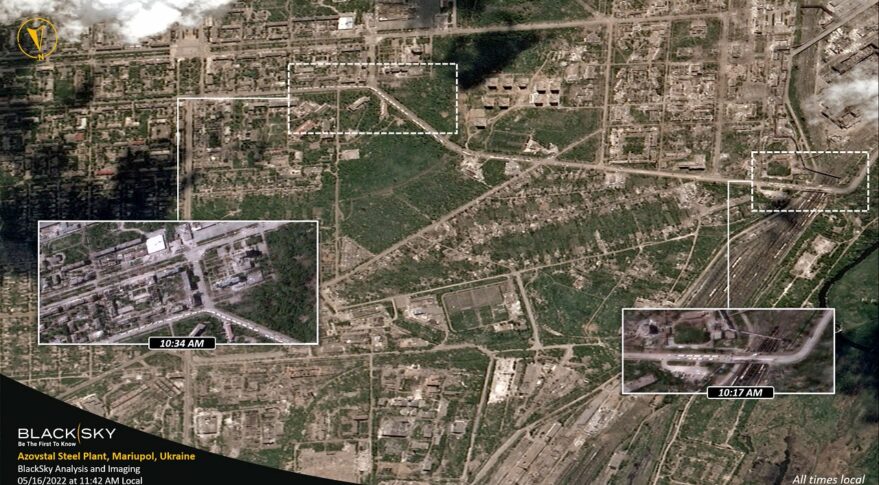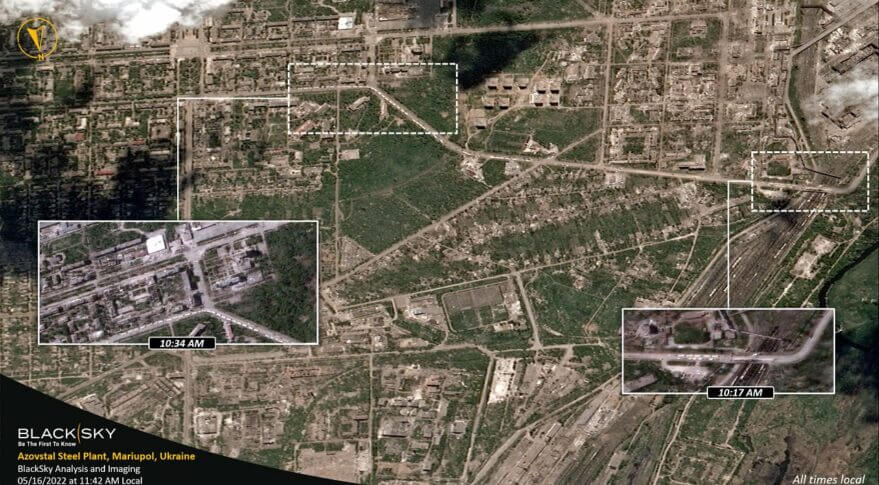
WASHINGTON — The contracts recently awarded by the National Reconnaissance Office to BlackSky, Maxar Technologies and Planet for commercial satellite imagery will likely reshape the market, says a new report from Quilty Analytics, a research and consulting firm.
The Electro-Optical Commercial Layer, or EOCL, contracts announced May 25 “reaffirmed Maxar’s position as the government’s anchor supplier of very high-resolution imagery, while also showing the heightened importance of smallsat constellations from Planet and BlackSky,” says the June 1 report.
Maxar’s contract is much larger than those of its competitors, but the spy agency’s decision to award 10-year deals is significant for all three firms, the report says. This extended period “raises the credit quality and capital attractiveness of all EOCL awardees.”
Maxar’s contract has a five-year baseline worth $1.5 billion with options for an additional $1.74 billion over the second half of the contract. BlackSky’s contract has a tw0-year $72 million baseline with options worth up to $1 billion. Planet Labs has not yet disclosed the value of its contract.
The EOCL awards also send a strong signal from the NRO that it plans to spend more money on commercial satellite imagery than it has in the past, says Quilty Analytics.
“Assuming that Planet’s contract is no worse than BlackSky’s two-year, $72-million baseline, NRO will have raised its annual budget for commercial imagery by 24% above [Maxar’s previous contract] EnhancedView’s $300 million per year,” the report says. “Notably, BlackSky and Maxar strongly inferred that significant upside exists beyond the baseline contract.”
Other takeaways from Quilty’s analysis:
The EOCL contract continues to leverage Maxar’s legacy fleet of four imaging satellites so it was unchanged at $300 million per year through the first four years, with the potential to step up to $340 million in year five.
Maxar’s future constellation WorldView Legion is not, at least initially, covered under the EOCL contract. “This will enable Maxar to monetize 100% of this new capacity with the NRO, other agencies, foreign governments, and commercial customers.”
BlackSky’s baseline contract was generally in-line with expectations, but the company’s contract ceiling of about $1 billion over the 10-year period was substantially higher than analysts expected and “implies the potential for significant upside over the baseline contract award.”
Maxar remains the top supplier of imagery to the U.S. government, but the company must now plan for long-term competition with BlackSky and Planet, both of which are planning fleets of 30 to 50-cm resolution satellites that will put them in more direct competition with Maxar in a few years.
Foreign operators, including those with U.S. subsidiaries like Airbus, ImageSat, Satellogic and SI Imaging were left out, which reaffirms the NRO’s policy to buy electro-optical imagery only from U.S.-owned, operated, and domiciled companies. The agency, however, said it plans to rely on non-U.S. owned companies for radar imagery and potentially other phenomenologies.






